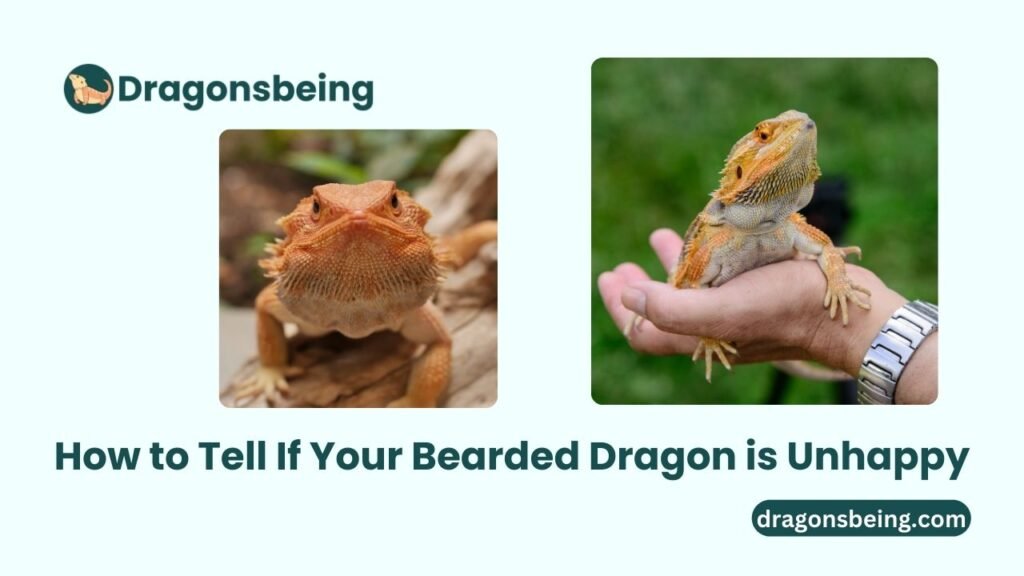Feed your bearded dragon 5 to 10 black soldier fly larvae per meal. Adjust the amount based on your dragon’s size and age.
Bearded dragons thrive on a balanced diet, and black soldier fly larvae offer a nutritious option. These larvae are rich in protein and essential fatty acids, making them a popular choice among reptile enthusiasts. They also provide hydration, which is crucial for a bearded dragon’s health.
While larvae can be a staple, it’s essential to diversify their diet with greens and other insects. Understanding the right portion size is key to maintaining your pet’s health. Regularly monitor your dragon’s weight and overall condition to ensure they receive adequate nutrition without overfeeding. A well-rounded diet supports their growth and vitality.
Introduction To Black Soldier Fly Larvae As Reptile Food
Black Soldier Fly Larvae (BSFL) are an excellent food source for bearded dragons. These larvae are nutritious and easy to digest. They offer many benefits that promote health and vitality.
Benefits For Bearded Dragons
- High protein content supports growth.
- Rich in calcium helps bone health.
- Low in phosphorus balances dietary needs.
- Encourages natural hunting behavior.
- Easy to store and handle.
Nutritional Value
| Nutrient | Amount per 100g |
|---|---|
| Protein | 40g |
| Fat | 20g |
| Calcium | 1.5g |
| Phosphorus | 0.5g |
| Moisture | 60g |
Black Soldier Fly Larvae provide a balanced diet. Their high protein and calcium levels benefit growing bearded dragons. Feeding BSFL helps maintain optimal health. Choose quality larvae for the best results.
Identifying Your Bearded Dragon’s Dietary Needs
Understanding your bearded dragon’s dietary needs is essential. Proper nutrition helps them grow strong and healthy. Black soldier fly larvae can be a great food source. However, knowing how many to feed depends on various factors.
Age-related Dietary Changes
Your bearded dragon’s age affects its dietary requirements. Young dragons need different nutrition than adults. Here’s a breakdown:
| Age Group | Recommended Larvae Amount | Dietary Focus |
|---|---|---|
| Hatchlings (0-2 months) | 5-10 larvae/day | High protein, soft foods |
| Juveniles (2-6 months) | 10-20 larvae/day | Balanced protein and greens |
| Adults (6 months+) | 20-30 larvae/day | Variety of insects and vegetables |
Adjust the amounts as your dragon grows. Young dragons require more protein for development. Adults can eat a balanced diet with more vegetables.
Signs Of Nutritional Deficiencies
Watch for signs of nutritional deficiencies in your bearded dragon. Common signs include:
- Weakness or lethargy
- Changes in appetite
- Weight loss
- Abnormal shedding
- Soft or brittle bones
These symptoms may indicate a lack of essential nutrients. Ensure a varied diet to prevent deficiencies. Supplement meals with vitamins if necessary. Regular vet check-ups can help monitor health.
Feeding Frequency: A Guide
Feeding frequency is crucial for your bearded dragon’s health. Understanding how often to feed them Black Soldier Fly larvae helps ensure they thrive. This guide breaks down feeding needs for both juvenile and adult bearded dragons.
For Juvenile Bearded Dragons
Juvenile bearded dragons need more frequent meals. They are growing quickly and require energy. Here’s a simple feeding schedule:
| Age | Feeding Frequency | Amount of Black Soldier Fly Larvae |
|---|---|---|
| 0-3 months | 2-3 times a day | 10-15 larvae per feeding |
| 3-6 months | 2 times a day | 15-20 larvae per feeding |
Monitor your juvenile’s weight. Adjust the amount of larvae as needed.
For Adult Bearded Dragons
Adult bearded dragons eat less frequently. They require fewer calories. Here’s a straightforward feeding guide:
| Age | Feeding Frequency | Amount of Black Soldier Fly Larvae |
|---|---|---|
| 6 months and older | 1-2 times a week | 20-30 larvae per feeding |
Check their body condition regularly. Adjust feeding frequency if necessary.
Use these tips to keep your bearded dragon healthy. Proper feeding ensures they live a long, happy life.
Optimal Quantity: How Many Larvae To Feed
Feeding the right amount of Black Soldier Fly Larvae is crucial for your bearded dragon’s health. Too few larvae can lead to nutritional deficiencies. Too many can cause obesity. Finding the optimal quantity ensures a balanced diet.
Calculating Based On Dragon Size
The size of your bearded dragon determines how many larvae to feed. Use the following guidelines:
| Dragon Size | Recommended Larvae |
|---|---|
| Hatchlings (0-3 months) | 5-10 larvae per feeding |
| Juveniles (3-6 months) | 10-15 larvae per feeding |
| Adults (6 months and older) | 15-20 larvae per feeding |
Monitor your dragon’s weight and adjust accordingly. A healthy weight is key to their well-being.
Adjustments For Health And Activity Level
Health and activity level impact how many larvae to feed. Active dragons need more food. Consider these factors:
- Health Issues: Sick dragons may eat less.
- Activity Level: Active dragons need extra larvae.
- Age: Younger dragons require more protein.
Always adjust based on your dragon’s needs. Regular weight checks help you stay on track.
Preparation Of Black Soldier Fly Larvae
Feeding your bearded dragon requires proper preparation of Black Soldier Fly Larvae. These larvae are nutritious and provide essential protein. Understanding how to prepare them ensures your pet stays healthy and happy.
Hygiene Practices
Maintaining hygiene is vital for your bearded dragon’s health. Follow these practices:
- Wash hands before handling larvae.
- Use clean containers for storing and serving.
- Store larvae in a cool, dry place.
- Dispose of uneaten larvae after 24 hours.
Keeping everything clean prevents the growth of harmful bacteria. Regularly check for any signs of spoilage.
Serving Suggestions
Serving Black Soldier Fly Larvae correctly enhances your bearded dragon’s diet. Here are some effective serving suggestions:
- Offer larvae as a treat or supplement.
- Mix with fresh vegetables for variety.
- Use them to entice picky eaters.
Consider the following serving sizes:
| Age of Bearded Dragon | Recommended Larvae per Meal |
|---|---|
| Hatchling (0-3 months) | 5-10 larvae |
| Juvenile (3-12 months) | 10-20 larvae |
| Adult (1 year+) | 20-30 larvae |
Adjust the serving size based on your bearded dragon’s activity level. Always observe your pet’s appetite and health.
Monitoring Your Bearded Dragon’s Health
Keeping your bearded dragon healthy is essential. Regular monitoring helps you spot any issues early. Pay attention to their diet, particularly how many black soldier fly larvae they consume. These larvae are nutritious, but balance is key.
Weight Tracking
Weight is a crucial indicator of health. Tracking your bearded dragon’s weight helps you ensure proper growth. Weigh them weekly for the best results. Here’s a simple table to help you:
| Week | Weight (grams) |
|---|---|
| 1 | 80 |
| 2 | 85 |
| 3 | 90 |
| 4 | 95 |
Record the weights over time. Look for consistent increases. A sudden drop may signal health issues.
Behavioral Signs Of Well-being
Behavior shows how your bearded dragon feels. Watch for these signs:
- Active Movement: They should roam and explore.
- Eating Well: A healthy appetite is a good sign.
- Bright Eyes: Clear eyes indicate good health.
- Regular Basking: They need heat for digestion.
Monitor their behavior daily. Look for any changes. Sudden lethargy or lack of interest in food is concerning. If you notice these signs, consult a vet.
Common Questions Addressed
Feeding your bearded dragon can raise many questions. Understanding how many Black Soldier Fly Larvae to feed is crucial. This section answers common queries about feeding larvae to your pet.
Can You Overfeed With Larvae?
Yes, you can overfeed your bearded dragon with larvae. Overfeeding may lead to health issues. Here are some signs of overfeeding:
- Weight gain
- Lethargy
- Digestive problems
Follow these guidelines to avoid overfeeding:
| Age of Bearded Dragon | Daily Larvae Intake |
|---|---|
| Hatchling (0-3 months) | 5-10 larvae |
| Juvenile (3-12 months) | 10-20 larvae |
| Adult (1 year and older) | 20-30 larvae |
Adjust the amount based on your dragon’s activity level. Always provide a balanced diet.
Alternatives To Black Soldier Fly Larvae
Many alternatives exist for feeding your bearded dragon. Here are some options:
- Crickets: High in protein, easy to find.
- Mealworms: Great for occasional treats.
- Dubia Roaches: Nutritious and low in fat.
- Waxworms: High in fat; use sparingly.
Consider offering vegetables and fruits as well. These add variety and nutrients:
- Collard greens
- Squash
- Carrots
- Berries
Mixing different food sources keeps your bearded dragon healthy and happy.
Creating A Balanced Diet Plan
Feeding your bearded dragon requires careful planning. A balanced diet keeps your pet healthy and happy. Black soldier fly larvae are a great protein source. However, they should not be the only food. Variety is key in any diet.
Incorporating Variety
Bearded dragons thrive on a mix of foods. Here are some types to include:
- Insects: Black soldier fly larvae, crickets, mealworms.
- Vegetables: Collard greens, bell peppers, squash.
- Fruits: Strawberries, blueberries, mango (in moderation).
Rotate these options weekly. This approach ensures your dragon gets all nutrients. It also prevents boredom with their meals.
Supplements And Vitamins
Even with a varied diet, supplements are essential. They help fill nutritional gaps. Consider these key supplements:
| Supplement | Purpose |
|---|---|
| Calcium Powder | Supports bone health and prevents metabolic bone disease. |
| Vitamin D3 | Helps with calcium absorption. |
| Multivitamin | Provides a range of essential vitamins. |
Dust the food with these supplements. Use them 2-3 times a week. This will help maintain your dragon’s overall health.
Frequently Asked Questions
How Many Black Soldier Fly Larvae Daily?
Feed your bearded dragon 20-50 larvae daily, adjusting based on size and age.
Can Bearded Dragons Eat Black Soldier Fly Larvae?
Yes, they can. Black soldier fly larvae are nutritious and safe for bearded dragons.
What Nutrients Do Larvae Provide Bearded Dragons?
Larvae are rich in protein, calcium, and healthy fats, essential for bearded dragon growth and health.
Are Black Soldier Fly Larvae Safe For Reptiles?
Absolutely! They are safe and a great food source for reptiles, including bearded dragons.
How To Store Black Soldier Fly Larvae?
Store larvae in a cool, dry place, ideally in a breathable container to maintain freshness.
Conclusion
Feeding your bearded dragon the right amount of black soldier fly larvae is crucial for its health. A balanced diet promotes growth and vitality. Always monitor your pet’s weight and adjust portions as needed. With proper care, your bearded dragon can thrive and enjoy a diverse, nutritious diet.

Hi, I’m Dr. Michelle Mayers, a veterinary professional with a deep passion for animal health and well-being. Over the years, I’ve dedicated my life to caring for animals and helping pet owners better understand their furry, feathered, or scaly companions. On my blog, Dragonsbeing, I share insights, tips, and stories that aim to educate, inspire, and connect with fellow animal lovers. Join me at Dragonsbeing as we explore the fascinating world of veterinary care and celebrate the special bond between humans and animals!


